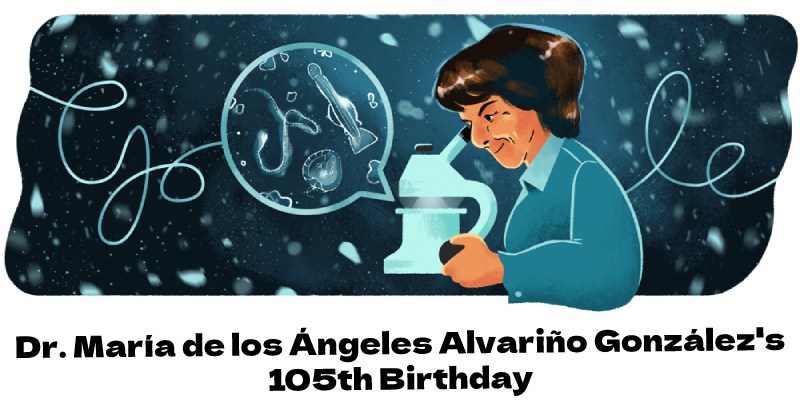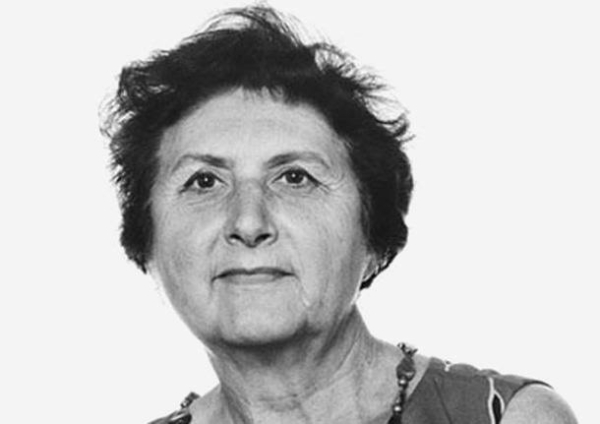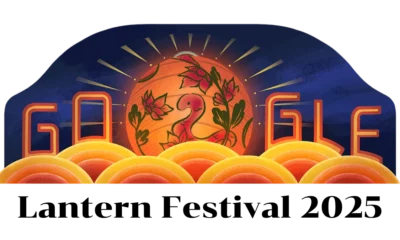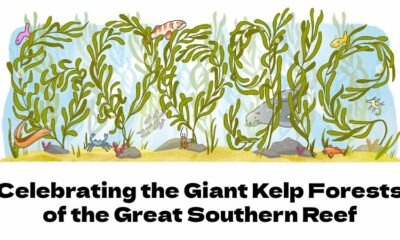Festivals & Events
Google Doodle celebrates Dr. María de los Ángeles Alvariño González’s 105th birthday; Here are interesting facts about Ángeles Alvarinño

Google Doodle celebrates the 105th birthday of Spanish fishery research biologist and oceanographer Dr. María de los Ángeles Alvariño González, the first female Scientist to deal with British and Spanish exploration ships, on October 3, 2021.
Who was Dr. María de los Ángeles Alvariño González?

Dr. María de los Ángeles Alvariño González, known as Ángeles Alvariño, was born on October 3, 1916 in Serantes (Ferrol, Galicia), a small coastal town in northern Spain’s Galician coast. She is around the world renowned as an authority in plankton biology. She was the very first woman appointed as researcher on board any British or Spanish exploration ships.
Ángeles Alvariño showed an interest in the natural sciences and read her father’s book on zoology from an early age. She went to the lycée Concepcion Arenal in Ferrol and in 1931 went to the University of Santiago de Compostela where she graduated summa cum laude in 1933. The titles of her expositions were “Social Insects” and “Women in Don Quixote”.
In 1934, Ángeles Alvariño was admitted at the Complutense University of Madrid to study on Natural Sciences, however needed to interfere with her studies as a result of the Spanish Civil War.
After the war, Ángeles Alvariño continued her studies, and in 1941 she got her graduate degree in Natural Sciences by the University of Madrid.
In 1940, Ángeles Alvariño married Eugenio Leira Manso, captain of the Spanish War Navy and Knight of the Royal and Military Order of Saint Hermenegild.
Ángeles Álvariño came back with her husband to Ferrol where she taught, from 1941 to 1948, biology, zoology, botany and geology as a professor at different schools.
In 1948, Ángeles Alvariño moved back with her family to Madrid to serve as a fishery research biologist with the Department of Sea Fisheries.
In 1951, Dr. Ángeles Alvariño got a graduate diploma in Experimental Psychology, Analytical Chemistry and Plant Ecology from the Complutense University of Madrid.
In 1950, Ángeles Alvariño moved back to Galicia and worked at the Spanish Oceanographic Institute in Vigo.
In 1953, Ángeles Alvariño got a scholarship from the British Council to lead research on zooplankton in the Marine Biological Association lab at Plymouth, England, under the direction of the well-respected experts in zooplankton Frederick S. Russell and Peter. C. Corbin.
María de los Ángeles Alvariño was the first woman delegated as researcher on board a British research vessel of all time. For the duration of her life she partook in a few expeditions and scientific cruises in the Atlantic and Pacific, on board oceanographic ships from England, America, Spain and Mexico.
In 1954, Ángeles Alvariño got back to Spain to proceed with her research on zooplankton. She planned special nets and enlisted fishermen and naval research vessels to sample plankton for her in the Atlantic close to Spain and close to Newfoundland, and in the Mediterranean.
Dr. María de los Ángeles Alvariño González worked at La Jolla from 1958-69 where she studied on the zooplankton off the coast of California as well as the Atlantic, Pacific and Indian Oceans. During this period she found 12 new Chaetognatha species, nine siphonophore and one medusa.
She got a PhD from the University of Madrid in 1967. She got different awards from institutions like the U.S. Office of the Navy, the California Cooperative Oceanic Fisheries Investigations, and the US National Science Foundation.
In January 1970, Dr. María de los Ángeles Alvariño González was delegated a position as Fisheries Research Biologist at the prestigious Southwest Fisheries Science Center (which is part of the National Oceanic and Atmospheric Administration).
In the later 1970s, Dr. María de los Ángeles Alvariño González attempted to coordinate oceanic research among Latin American countries, and she studied on the Antarctic. During this period she got different awards from the Food and Agriculture Organization of the United Nations (FAO) and from the United National Educational, Scientific, and Cultural Organization (UNESCO).
Dr. María de los Ángeles Alvariño González retired as Emeritus Scientist in 1993 however kept on leading research on seagoing vessels hosted by different nations. Around the end of her life, Ángeles Alvariño dedicated herself to study on the early history of scientific exploration.
For the duration of her life, Dr. Ángeles Alvariño likewise served as faculty at the National Autonomous University of Mexico in 1976; at San Diego State University from 1979–82; and later, at the University of San Diego from 1982–85.
Dr. María de los Ángeles Alvariño González likewise was visiting professor at the Federal University of Paraná in Brazil in 1982, and at the National Polytechnic Institute of Mexico from 1982–86. During these years Alvariño directed the doctoral research of a few students and served on thesis committees in different countries.
During Dr. Ángeles Alvariño’s career she found 22 new marine species or animals, and changed their morphology at the diverse development stages by using illustrations and personal notes.
Dr. María de los Ángeles Alvariño González published over 100 scientific books, chapters and articles. In her late career, she studied on the history of early marine scientific exploration.
Upon Dr. María de los Ángeles Alvariño González’s death in San Diego (California), on 29 May 2005, she left a completed manuscript on the birds and marine animals found in the Malaspina Expedition that she later studied. This project will soon be finished and deciphered by her daughter, Maria de los Angeles Leira Alvariño, who is presently a well-prestigious architect and urbanist situated in the US.
Two planktonic species are named after her, the chaetognath Aidanosagitta alvarinoae (Pathansali, 1974) and the hydromedusa Lizzia alvarinoae (Segura, 1980).
In recognition of her extraordinary scientific career, in 1993 Ángeles Alvarinño got the Great Silver Medal of Galicia from King Juan Carlos I and Queen Sophia of Spain.
The University of A Coruña devoted the Week of Sciences to her in 2005, and the City of Ferrol paid a posthumous tribute in the Campus of Esteiro, where a dedicatory plaque respects one of the most prominent women scientists in the world.
The Government of Galicia awards the Ánxeles Alvarinño Postdoctoral Fellowships, named after her.
A research vessel of the Spanish Institute of Oceanography is named “Ángeles Alvariño”. The vessel was launched in 2012 by Ángele’s daughter, Maria de los Angeles Leira Alvariño.
Today, Ángeles Alvariño is the only Spanish scientist of 1,000 in the “Encyclopedia of World Scientists,” and a modern research vessel in IEO’s fleet bears her name.
On October 3, 2021, Google featured a Doodle on its homepage in numerous nations for celebrating Dr. María de los Ángeles Alvariño González’s 105th Birthday.
-

 Business3 weeks ago
Business3 weeks agoPrakash and Kamal Hinduja: Driving Social and Environmental Change
-
Education4 weeks ago
Fred DuVal: University Leadership as a Critical Resource for Climate Change Research and Life-Saving Solutions
-

 Health3 weeks ago
Health3 weeks agoThe Hinduja Brothers Commitment to Global Health: Empowering Communities Across Borders
-

 Cryptocurrency3 weeks ago
Cryptocurrency3 weeks agoDesigned For The Masses: How Akasha (AK1111) Is Unlocking Crypto For The Next Billion Users
-

 Cryptocurrency4 weeks ago
Cryptocurrency4 weeks agoNexaglobal & Future World Token (FWT): Could This Be the Next Big Crypto Investment of 2025?
-

 Sports4 weeks ago
Sports4 weeks agoWomen’s NCAA Tournament 2025 Sweet 16: Full Schedule, Fixtures, Teams, Bracket, and How to Watch March Madness Basketball Match Live
-

 Startup2 weeks ago
Startup2 weeks agoCost-Saving Strategies Every Small Business Owner Should Know to Boost Efficiency
-

 Startup3 weeks ago
Startup3 weeks agoMatthew Denegre on the Art of Deal Sourcing: Finding the Right Investment Opportunities























